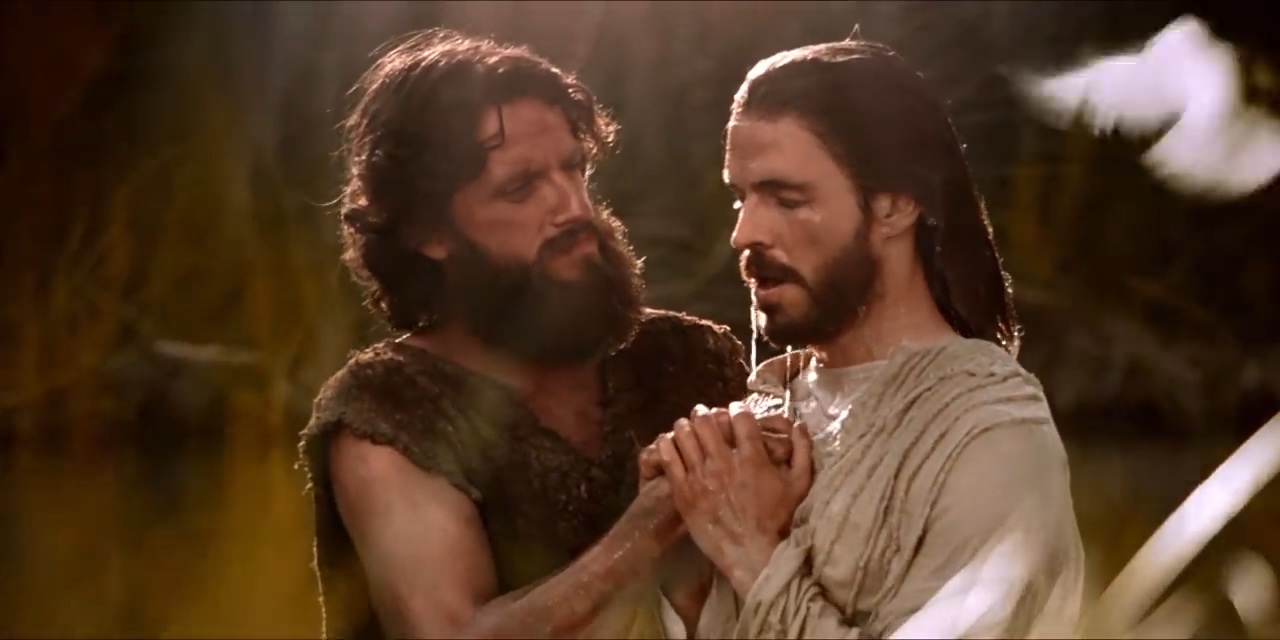To accompany your Come Follow Me study January 23-29
In addition to reading the indicated chapters, you may wish to:
- Read the applicable portions of the New Testament Institute Student Manual at
- https://www.churchofjesuschrist.org/study/manual/new-testament-student-manual/introduction-to-matthew/chapter-2?lang=eng
- https://www.churchofjesuschrist.org/study/manual/new-testament-student-manual/introduction-to-mark/chapter-11?lang=eng
- https://www.churchofjesuschrist.org/study/manual/new-testament-student-manual/introduction-to-the-gospel-according-to-st-luke/chapter-15-luke-1-3?lang=eng
- See the video Come Follow Me (Jan 23-29) Matthew 3, Mark 1, Luke 3 | Water & Fire at Come Follow Me (Jan 23-29) Matthew 3, Mark 1, Luke 3 | Water & Fire – YouTube
- See the video Jesus is Baptized by John at https://www.youtube.com/watch?v=9_dr9njVzKM
- Watch The Gospel According to Matthew, minutes 14:53-19:21, at https://www.youtube.com/watch?v=woAhReBytBk&t=6494s
- Watch The Gospel of Mark Visual Bible, minutes 00:00-5:54, at https://www.youtube.com/watch?v=BcdgY7V4jZ4&t=1190s
- Watch The Gospel of Luke, minutes 35:12-40:46, at https://www.youtube.com/watch?v=2PHPLApTt7Y
If you would like a Kahoot game related to this material which you could use for personal study or use with your family or your class, click here: https://create.kahoot.it/share/matthew-3-mark-1-and-luke-3/4fe9c3aa-85bc-4a53-8484-731088e3a599. (To use it with a group, after clicking on this link, you will need to log into Kahoot, creating a free account if you have not done so previously, then click on the blue “Start” button.)
Points to Ponder in Matthew 3, Mark 1, and Luke 3
1. What did you learn about John the Baptist in your reading this week that was new, or that hit you with new force?

2. How many distinctive Latter-day Saint concepts can you illustrate from the account of Jesus’ baptism?
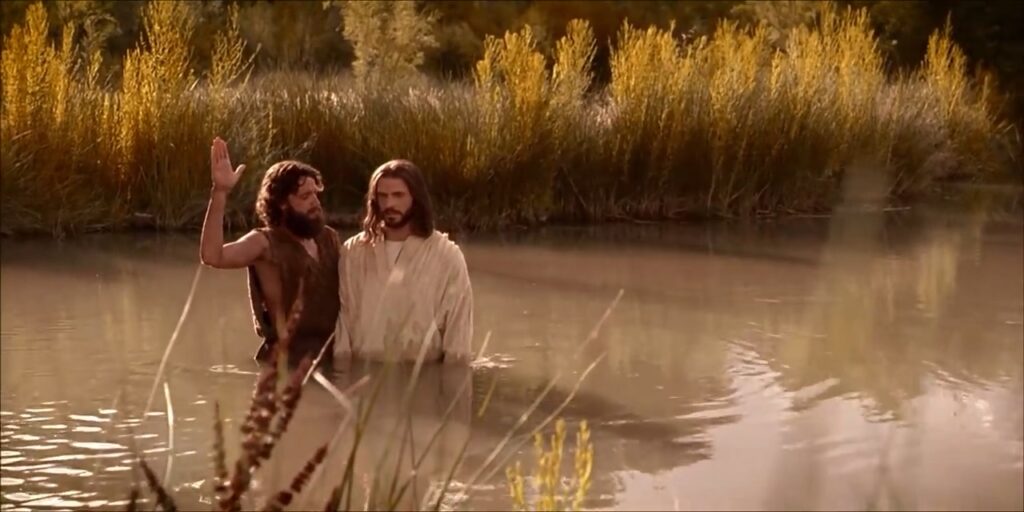
3. What is the real reason it was necessary for Jesus to be baptized, not counting the stock answers of “to set an example” and “to fulfill all righteousness,” which don’t really answer the question?
4. What do you consider the most significant of the changes made in the Joseph Smith Translation in these chapters?
5. Does the Holy Ghost really look like a dove? What are we to understand from His appearance “in a bodily shape like a dove”? (Luke 3:22.)

6. What significance is there in the fact that John the Baptist started his instructions on repentance with an exhortation to be generous with the poor?

7. Why would John the Baptist call potential investigators a “generation of vipers”? (Matthew 3:7.) Wouldn’t he be more likely to reach their hearts by speaking more politely and kindly to them?

8. What application can we make from John the Baptist’s specific instructions to the publicans? (Luke 3:13.)
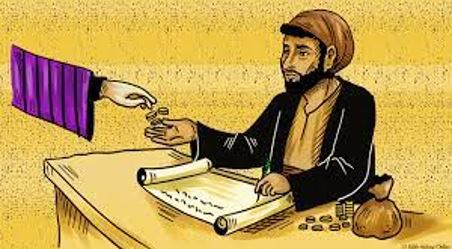
9. How can a soldier “do no violence”? (Luke 3:14.) Isn’t that the only thing he’s really employed to do?
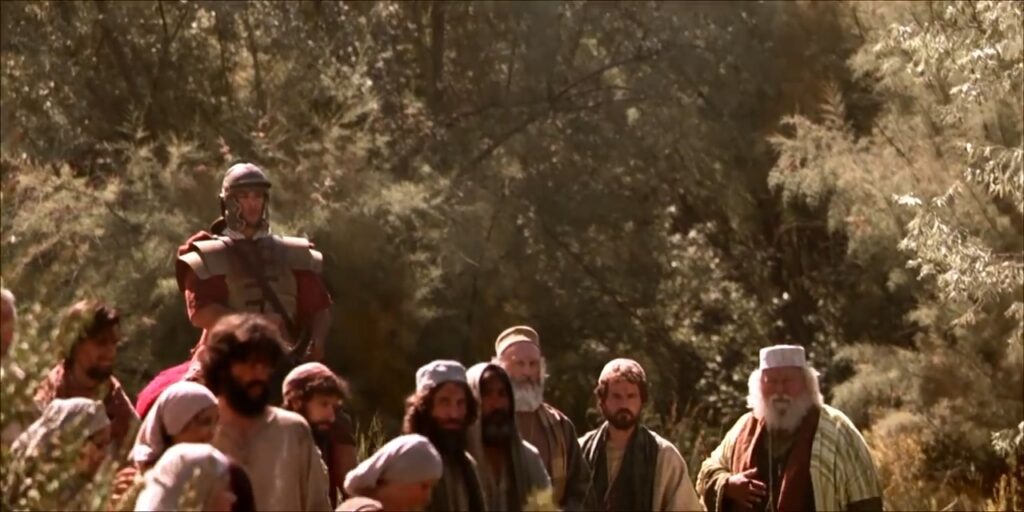
10. Does John’s instruction to the soldiers to “be content with your wages” (Luke 3:14) mean it’s wrong to ask for a raise?

11. Why did John the Baptist say that Jesus’ “fan” was “in his hand”? Was it a hot day? (Matthew 3:12.)
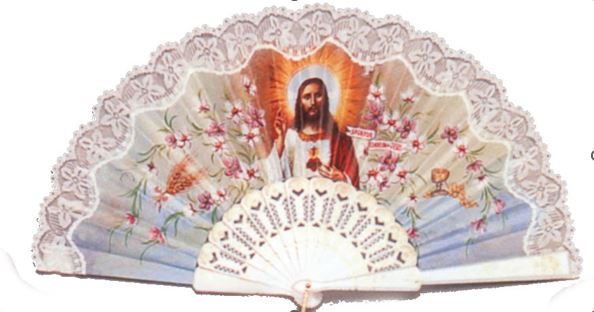
12. How can Luke say that Adam “was the son of God,” if Jesus was His Only Begotten Son? (Luke 3:38.)
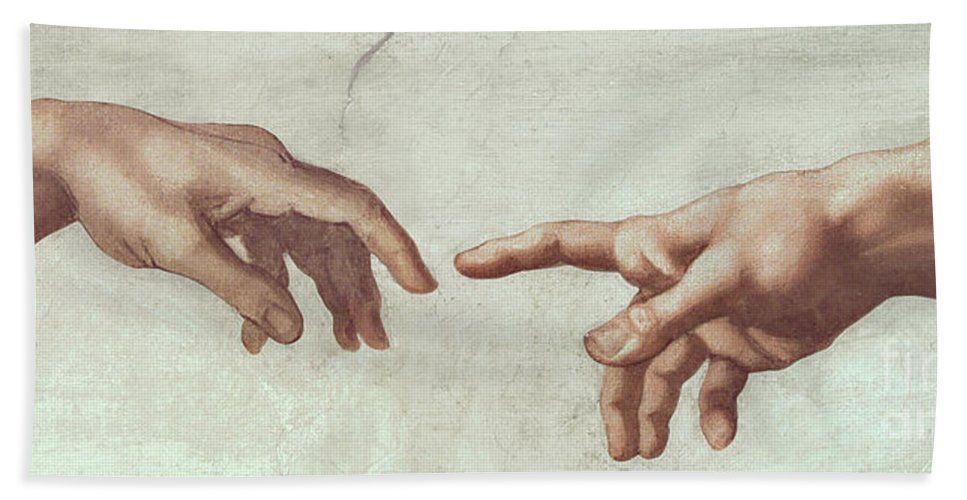
Possible Answers to Points to Ponder in Matthew 3, Mark 1, and Luke 3
1. What did you learn about John the Baptist in your reading this week that was new, or that hit you with new force?
Your choice. I noticed for the first time that John didn’t just take it upon himself to start preaching, but that “the word of God came unto John the son of Zacharias in the wilderness,” obviously instructing and prompting him to do so. (Luke 3:2.) I was impressed that John’s first instructions to those who needed to qualify for baptism was that they be generous with those poorer than themselves. I admired John again that he wasn’t out to make fame for himself but to prepare the way for one whose shoes he didn’t consider himself worthy to unloose. And I was once again struck by the ascetic life he led in the wilderness, eating locusts and wild honey and wearing the simplest of homemade clothes.
2. How many distinctive Latter-day Saint concepts can you illustrate from the account of Jesus’ baptism?
They would include:
- The necessity of baptism, if even the Son of God needed to receive it.
- The importance of repentance as a preparation for baptism.
- The proper mode of baptism. (Since Jesus and John “went up straightway out of the water,” (Matthew 3:16), they had clearly been down in the water, which would have been quite unnecessary if baptism were simply pouring a few drops on the head of the candidate. Even the word “baptize” itself comes from the Greek word meaning “to submerge,” not to merely moisten.
- The importance of the Holy Ghost, permanent reception of which follows baptism.
- The separate nature of the three members of the Godhead, as while Jesus was in the water, the voice of the Father came from heaven, and the Holy Ghost descended therefrom.
- That we, like Jesus, may know through revelation that the course of our life is pleasing to God.
3. What is the real reason it was necessary for Jesus to be baptized, not counting the stock answers of “to set an example” and “to fulfill all righteousness,” which don’t really answer the question?
Jesus was clearly not baptized for some of the reasons for which we are. He had no sins to be remitted. He didn’t need baptism, as we do, to join the Church, as He was already head of that Church and by definition part of it. Yes, he set an example for us, but an example of what? And to say it was “to fulfill all righteousness” really doesn’t say anything. It’s just saying it was the right thing to do, without explaining why.
The primary reason for Christ’s baptism is spelled out in 2 Nephi 31:7: “he … witnesseth unto the Father that he would be obedient unto him in keeping his commandments.” That’s not saying he was baptized just because it was a commandment. It’s saying that even though Jesus was perfect up until that point, He, like we, needed to sign the contract (enter into a covenant) that He would in the future continue to keep all of God’s commandments. It’s somewhat like a person with a perfect credit rating wanting to buy a car by making monthly payments. Even though he has never defaulted on a loan before, the dealership will still require him to sign the contract to keep up the payments on the car. Jesus needed to make that promise to His Father, showing that we all need to make the same promise in the waters of baptism.

4. What do you consider the most significant of the changes made in the Joseph Smith Translation in these chapters?
Your choice. To me, it may be the added phrase from the Father Himself, who after saying, “This is my beloved Son, in whom I am well pleased,” added the familiar phrase: “Hear ye him.” It is also noteworthy that the JST version of Luke 3 adds over five verses to Isaiah’s prophecy of the coming of the Savior Himself, both in the meridian of time and in the latter days.
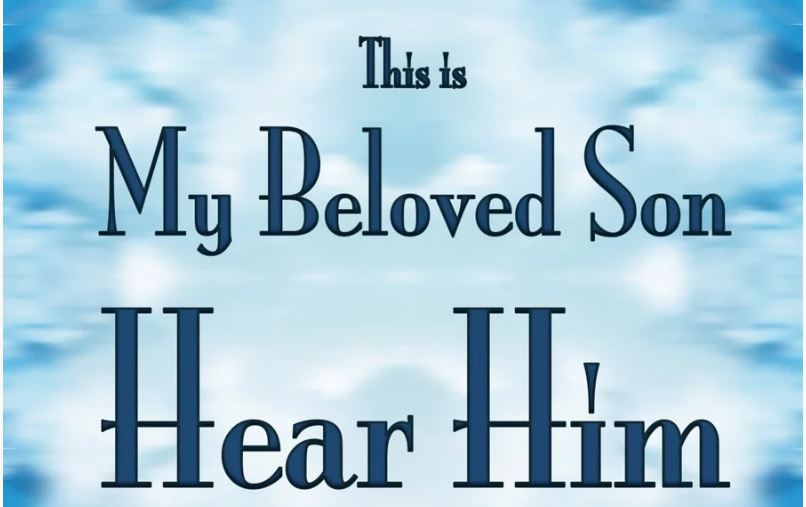
5. Does the Holy Ghost really look like a dove? What are we to understand from His appearance “in a bodily shape like a dove”? (Luke 3:22.)
The Institute New Testament Student Manual states: The Prophet Joseph Smith explained that the Holy Ghost did not appear as a dove after the baptism of Jesus Christ. Rather, the descending dove signified that the Holy Ghost was present on that occasion: “The sign of the dove was instituted before the creation of the world, a witness for the Holy Ghost, and the devil cannot come in the sign of a dove. The Holy Ghost is a personage and is in the form of a personage. It does not confine itself to the form of the dove, but in sign of the dove. The Holy Ghost cannot be transformed into a dove; but the sign of a dove was given to John to signify the truth of the deed, as the dove is an emblem or token of truth and innocence” (Teachings: Joseph Smith, 81).
Though even with Joseph Smith’s statement, the issue may seem a bit confusing, it appears we can conclude:
- Church leaders and scholars do not dispute that a dove was seen on the occasion of Christ’s baptism.
- The Holy Ghost, if seen as a personage, would look like a man, not a dove.
- Just as the Holy Ghost can enter into us, presumably it could, if desired, enter into the body of a dove. It may or may not have actually done so at Jesus’ baptism. It is obvious that the Holy Ghost can enter into the hearts of many upon the earth at the same time.
- The report that the Holy Ghost descended “like a dove” could be understood as meaning simply that it came down peacefully and gracefully, as a literal dove descends.
- The dove served as a confirming sign to John that this was indeed the Messiah whom he had just baptized.
6. What significance is there in the fact that John the Baptist started his instructions on repentance with an exhortation to be generous with the poor?
As Paul would later teach so eloquently, this is the very essence of religion: “Though I speak with the tongues of men and of angels, and have not charity, I am become as sounding brass, or a tinkling cymbal.” (1 Corinthians 13:1.)
James similarly taught, “Pure religion and undefiled before God and the Father is this, To visit the fatherless and widows in their affliction, and to keep himself unspotted from the world.” (James 1:27.) To remain unspotted from the world, of course, is important, but in James’ list it took second place to being generous with the needy.
Just as prophets have taught that pride is the root of all sin, so does it appear that love for the poor and needy is the most fundamental of all virtues and a key to the development of the others.
7. Why would John the Baptist call potential investigators a “generation of vipers”? (Matthew 3:7.) Wouldn’t he be more likely to reach their hearts by speaking more politely and kindly to them?
These Pharisees and Sadducees were presumably not there as sincere seekers of the truth but to oppose John’s work. John’s words were not expected to reach the hearts of the hard-hearted but were likely for the benefit of his more sincere listeners who needed to be warned of the poisonous influences of these religious and societal leaders.
8. What application can we make from John the Baptist’s specific instructions to the publicans? (Luke 3:13.)
Publicans, or tax collectors, were so notorious in Jesus’ day for their dishonesty that their very name became synonymous with sinners. But there was nothing in the profession itself which was dishonorable. As long as earthly governments remain, there will presumably be a need for taxes and those who collect them. In fact, Matthew, the apostle, was a publican prior to his call. John didn’t tell the publicans to look for another line of work, just to be scrupulously honest in what they did, exacting “no more than that which is appointed you.” This has an obvious application to employers and employees everywhere—to be strictly honest in all their dealings.
9. How can a soldier “do no violence”? (Luke 3:14.) Isn’t that the only thing he’s really employed to do?
As was the case with the publicans, there was nothing inherently wrong with being in the military. But just as the temptation to dishonesty may have been an occupational hazard for tax collectors, so was the opportunity to do gratuitous violence the same for soldiers. As the Book of Mormon so pointedly teaches us, even prophets could simultaneously be righteous military leaders. But the righteous Nephites understood they were never to instigate conflict nor to enjoy “sending so many of their brethren out of this world into an eternal world, unprepared to meet their God.” (Alma 48:23.)
10. Does John’s instruction to the soldiers to “be content with your wages” (Luke 3:14) mean it’s wrong to ask for a raise?
Not necessarily. If one’s value to his employer is such that he deserves more compensation, and if he wants it to be able to do more good in the world, there would be nothing wrong with making appropriate suggestions to his boss. But if the discontent with current wages is born more of greediness and a desire to get more while doing less, as we assume may have been the case with many of the soldiers John was addressing, then it would be inappropriate.
11. Why did John the Baptist say that Jesus’ “fan” was “in his hand”? Was it a hot day? (Matthew 3:12.)
This “fan” was a winnowing fork, much like a wooden pitchfork, used to separate the wheat from the chaff. Similarly, Jesus’ mission would include separating saints from sinners at the last day.

12. How can Luke say that Adam “was the son of God,” if Jesus was His Only Begotten Son? (Luke 3:38.)
Jesus was certainly God’s Only Begotten Son in the sense of His being the only one born of a divine Father and mortal mother into this fallen world. That does not negate God’s role as Father of many sons and daughters in other environments, however. He was the Father of us all in the premortal world. He may well have countless sons and daughters born to Him on other worlds of which we have no specific knowledge. We have no details of Adam’s physical creation, but there is no compelling reason to believe it was more likely that his body was created in a divine workshop than that he was born of Heavenly parents prior to his and Eve’s being placed physically on this planet.
